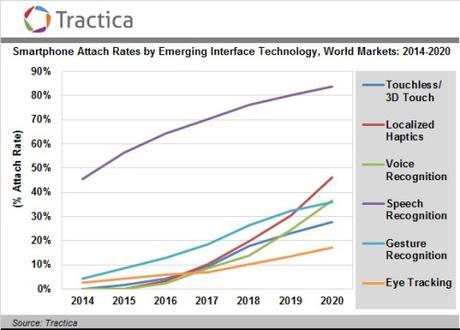A recent report states that the future of mobile devices lies in multi-modal interfaces, and that over the next few years, voice in particular will greatly grow in importance, becoming a major interface for mobile devices.

Just as our experience of the world is determined by the input we take in from our five senses, our experience of technology is dependent on the methods we use to interact with it – and the introduction of voice opens up many interesting possibilities.
With the popularization of voice interfaces, people can access content while their hands and eyes continue to engage with the outside world. This creates new opportunities for interaction while driving, cooking, exercising, working with your hands, or even just sitting across the room from a device. But potential changes extend beyond that.
“The best part of NLI [natural language interaction] is that it mimics the ordinary way humans interact with each other, which we learn very early on in life,” writes UX designer Brian Pagán. “Not only does NLI (when done well) make the interaction with a computer feel very natural, it also primes people to anthropomorphize the computer, giving it a role as a social actor. Giving voice to a social actor in people’s lives bestows immense power upon designers and content creators to build deeply emotional connections with those people.”
In a different piece, Oliver McGough of Usabilla predicts: “As the primary input method moves from touches and gestures towards voice, less screen real estate needs to be consumed by controls and the like. This opens up more area for providing rich visual content. However, even this visual content may see a decline. More advanced digital assistants allow us to be spoken to. To have emails, calendar reminders, the weather, and the news all read to us – we can vocally react to what we hear to delve deeper.
“For UI this should mean a continuation of the minimalism trend. With less need for essential buttons and controls there is greater flexibility…. Each interface can be designed to reflect its user’s personality, rather than to reflect the device it is being used on.”
(Thomas Sutton, Creative Director of Frog Design, shares a similar perspective.)
